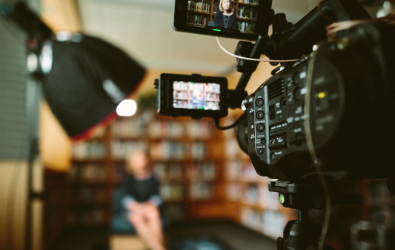2020 has been an exciting and difficult time to be a journalist. Many are following not one, but two of the biggest stories they will ever cover– a global health crisis and the waking up of the American society to the racism that has been baked into many of our systems.
Journalists face many daunting challenges. The freedom of the press we all cherish is under attack both at home and abroad. The U.S. Press Freedom Tracker has tracked more than 470 reported incidents of aggressions against journalists covering Black Lives Matter protests in more than 60 different cities. Photojournalist Linda Tirado lost sight in one eye when she was hit in the face with a foam bullet, CNN reporter Omar Jimenez and his crew were arrested while cameras were rolling in Minnesota, and two Australian journalists were attacked while they were live on the air covering protests in London.
Politicians are attacking the credibility of journalists through phrases like “fake news” and “alternative facts,” as well as the questioning of information presented by scientists and the intelligence community. According to a Pew Research Center survey, 44 percent of people have confidence that the news media is getting the facts right about COVID-19, and perceptions of media coverage often vary depending on the political party respondents support.
Fewer journalists are being asked to do more. The economic consequences of COVID-19 have made ads harder to sell, which has led to severe cutbacks at many media outlets. Last month WBUR laid off more than 10% of its staff. Poynter is keeping a long-running list of outlets that are furloughing workers, cutting pay, and reducing coverage due to the pandemic. Many reporters, producers, and editors who remain on the job have had to adjust from working in a bustling newsroom to their living rooms. Those in the field are being given masks, gloves, and highly visible press credentials to keep them safe.
We, as public relations professionals, need to be aware of these obstacles when approaching reporters and producers about doing stories for our clients. Here are some tips on ways to set yourself up for media success.
- Make your story match the news cycle – Understand that, with very few exceptions, COVID-19 and the racial unrest are what media outlets are covering. They will be more likely to cover your client if you can find a way to fit the work that they do into one of those two narratives. For example, it can be offering your client’s insight about how they are addressing racial disparities in their industry or it can be a story about how your client is giving back to those affected by the COVID-19 pandemic.
- Add to the conversation – Encourage your clients to have newsworthy virtual events such as webinars, seminars, and fundraisers that bring together experts to talk about important issues such as racism, educational inequity, or healthcare. Virtual events have the added logistical bonus of being easier for journalists to cover than events to which they would typically have to travel in order to attend.
- Help them so they can help you – Whether it’s including key statistics and other essential information in your press materials or making the logistical arrangements for their interviews, journalists appreciate it when you make their jobs easier. Also, do your homework on the stories they are covering and be persistent when trying to reach them, since most are working outside of the newsroom.
- Make the most of the hits you get – When a reporter does a story about your client, make sure they are sharing it on all their social media platforms and their website. PR firms should as well. With so many people spending more time in front of computer screens, experts say now is the time to increase your social media presence.
This is not a time for you or your clients to stand on the sidelines. It’s time to be part of the conversation and to help share their important work.
For more fearless communication tips, visit our website.


